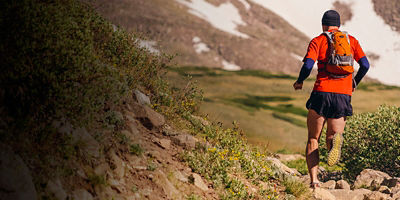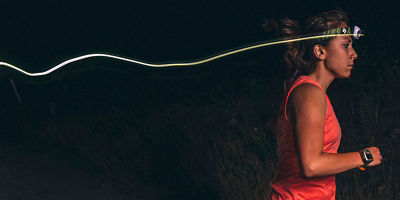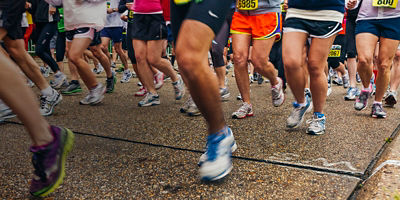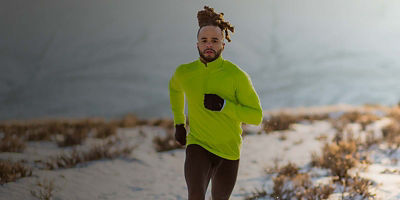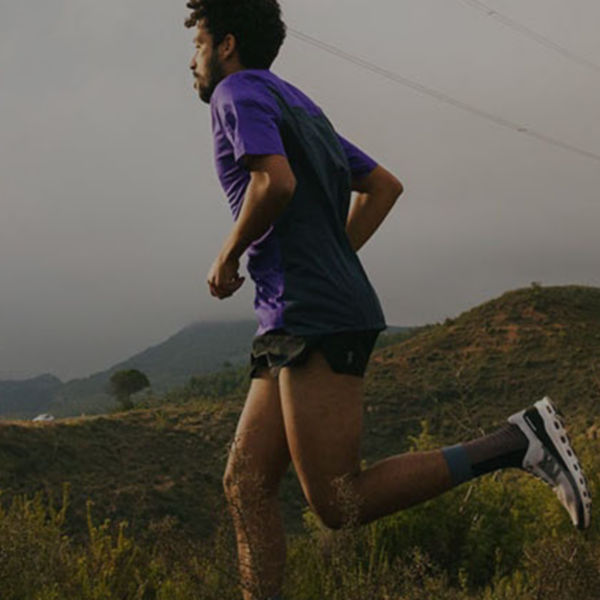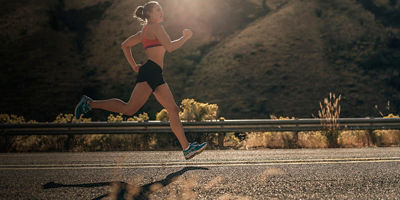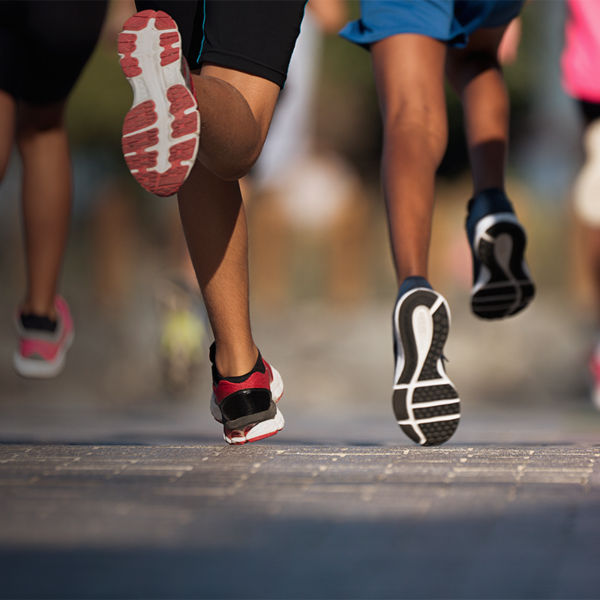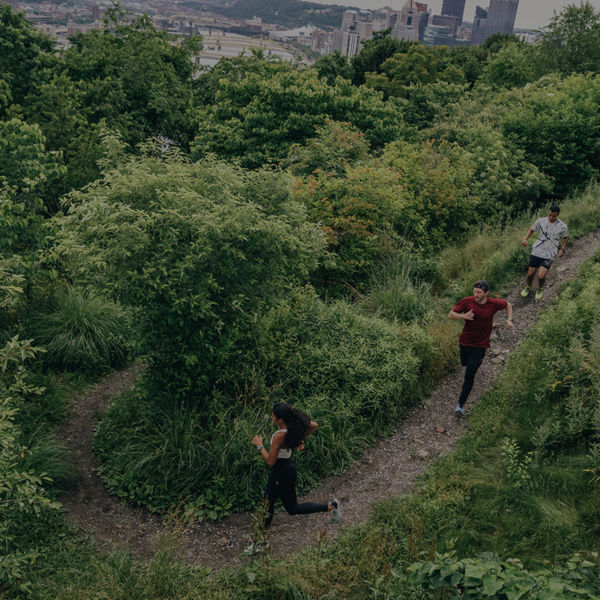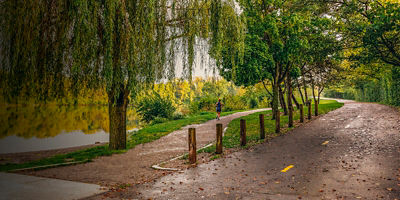Sideways Skipping
Why: Strengthen stabilizing muscles around ankles, knees, and hips.
How: Turn sideways and skip down the field, never crossing your feet. Either place your hands on your hips (easier), or allow them to cross over your body in front of you with every skip (more challenging). Repeat back to where you started by reversing the direction, still facing the same way.
High Knees
Why: Strengthen and practice the loading phase of your stride.
How: Standing tall, bring each knee up toward your chest, one and a time and in a quick movement. Think about springing up from the ground instead of pulling your knee toward you. Don’t lean back or forward. Jog slowly back to the starting area.
Butt Kicks/High Heel
Why: Coordinates glutes and hamstrings so they work together.
How: Standing tall but leaning slightly forward, kick your heels toward your butt, one at a time and in a quick movement. Jog slowly back to the starting point.
Carioca/Grapevine
Why: Strengthens stabilizing muscles and builds coordination.
How: Standing sideways, cross your back leg over your front leg, then move your now-backleg to become your front leg as you move down the field. Use your arms to help your body rotate back and forth at the torso while you do this. Jog slowly back to the start.
A-Skips
Why: Activates glutes and hamstrings.
How: Try this walking at first. Take a step, then drive your knee high while also driving your opposite, bent arm high, and raise up onto the toes of your standing leg. Walk in this pattern, alternating knees. To increase this to a skip/hop, drive your knee and opposite arm so much that you lift off the ground with each step to create a high-knee skip down the field. Aim for a backward pulling motion, like pawing the ground, when placing your foot back on the ground.
B-Skips
Why: Increases range of motion, encourages high knees and gripping the road.
How: Again, start this motion slowly by walking, then start with the same motion as an A-Skip, but after the initial knee drive, straighten your leg out in front of you before placing it back on the ground in a pawing motion. Think of a Can Can dancer.
Striders
Why: Reinforces the movement patterns from all previous drills into a striding, running motion.
How: You’ll need more space for striders, which build from a slow jog into a quick pace. You want at least 250 feet. Roll into each strider with an easy pace while building into a fast run, about 80% of your max effort. Focus on form. Jog back to the starting area. Repeat two or three times.






